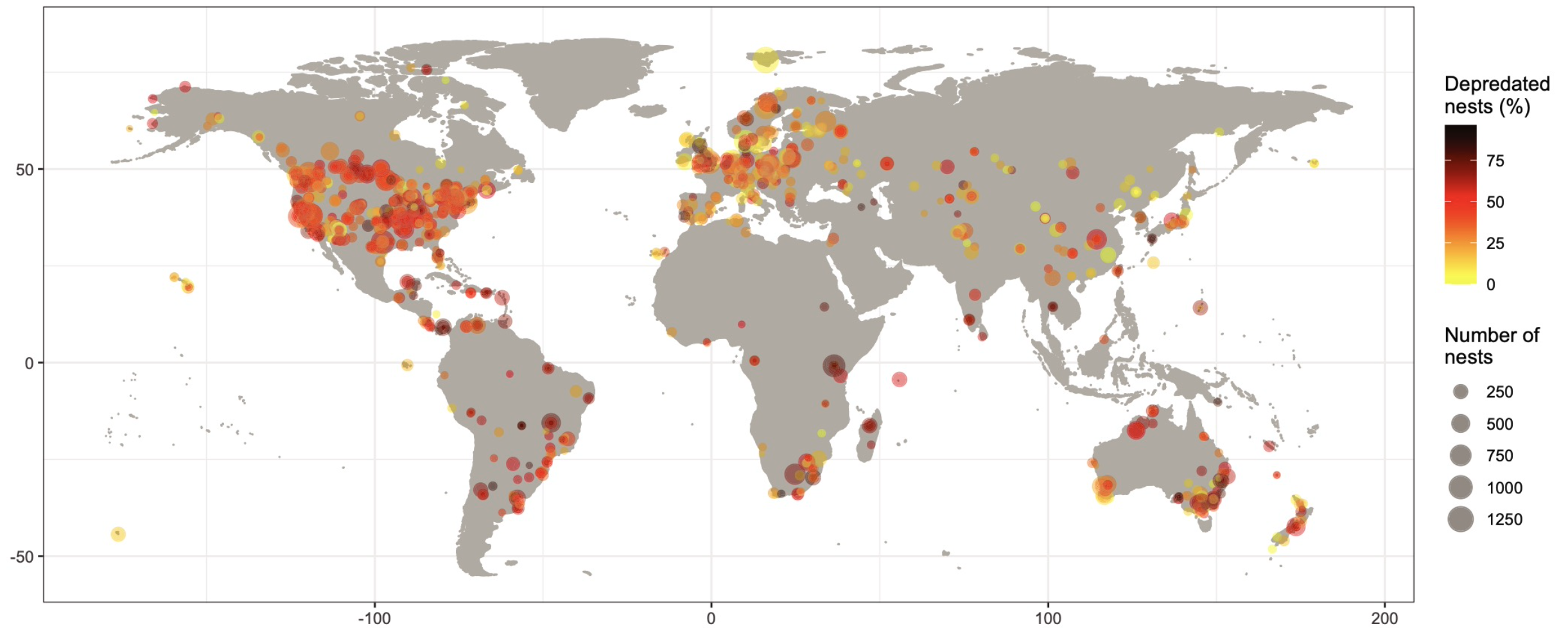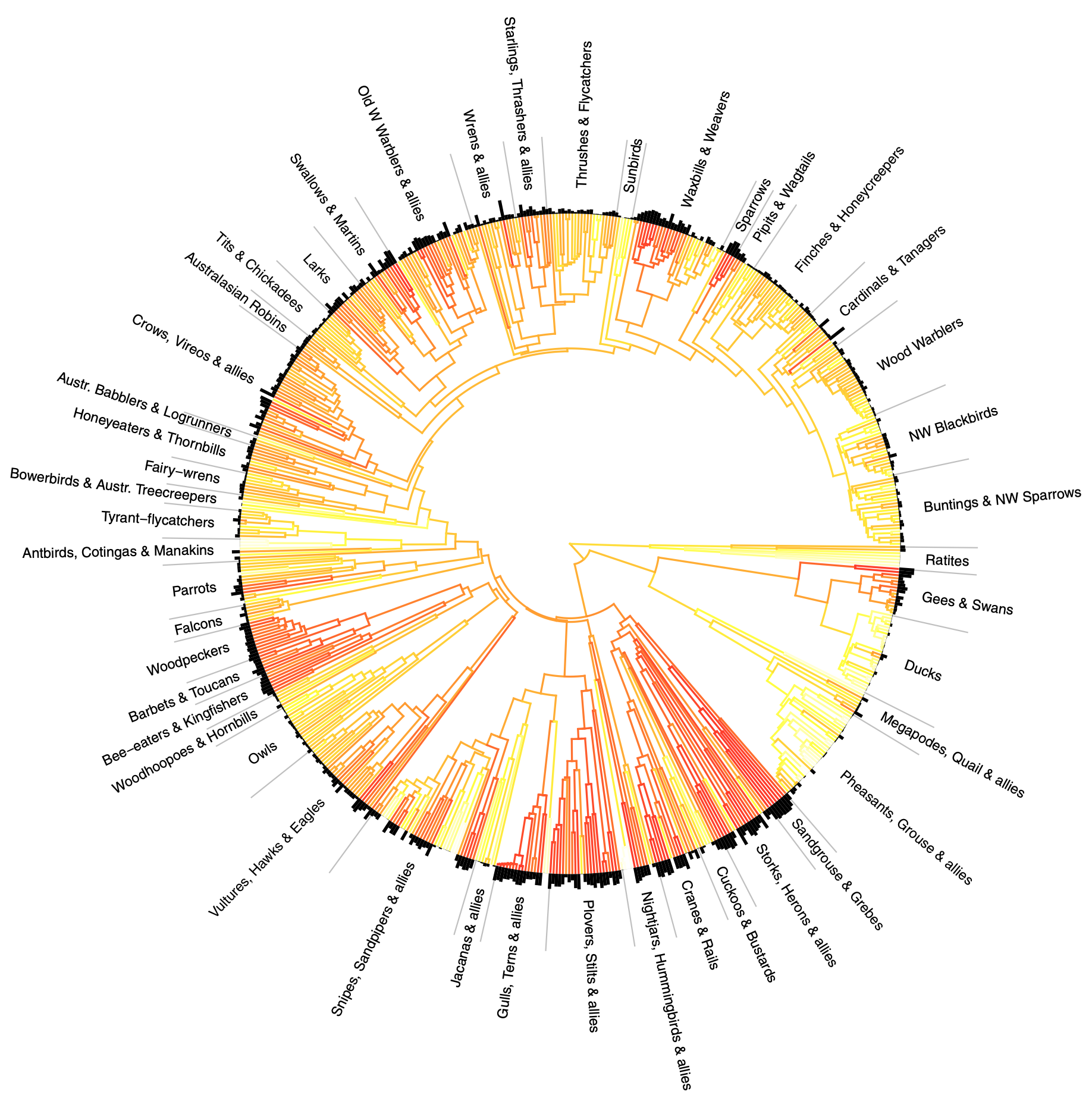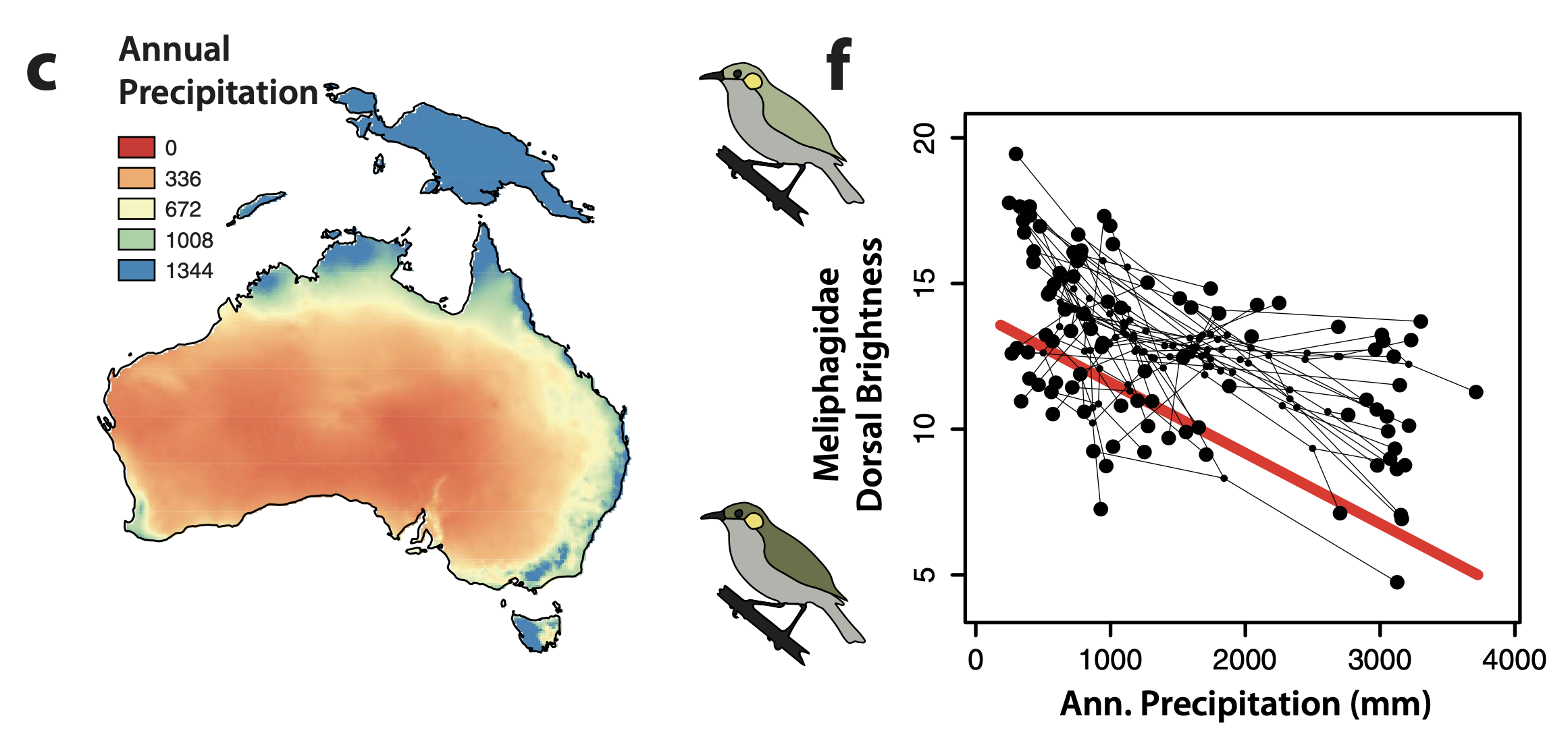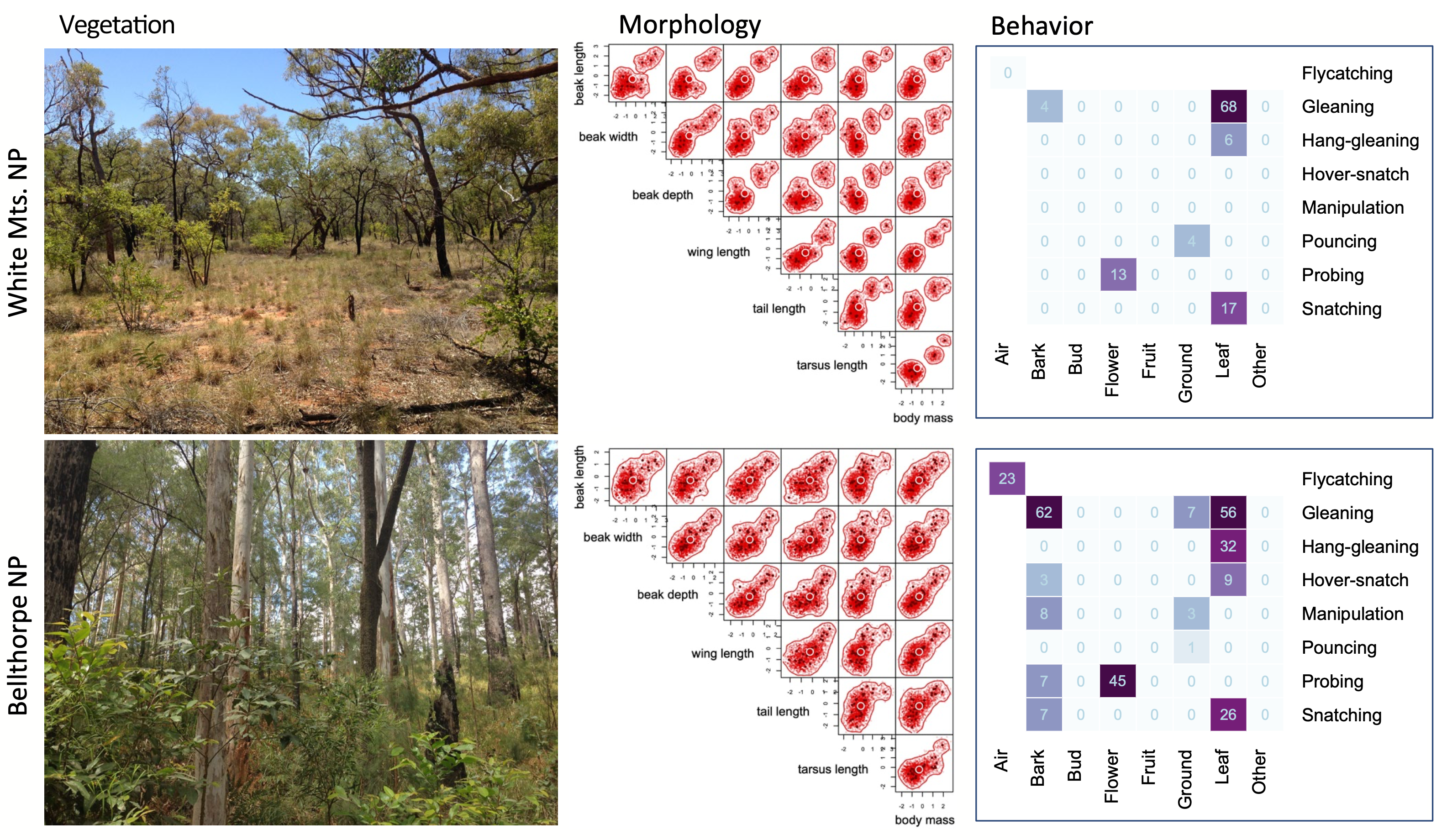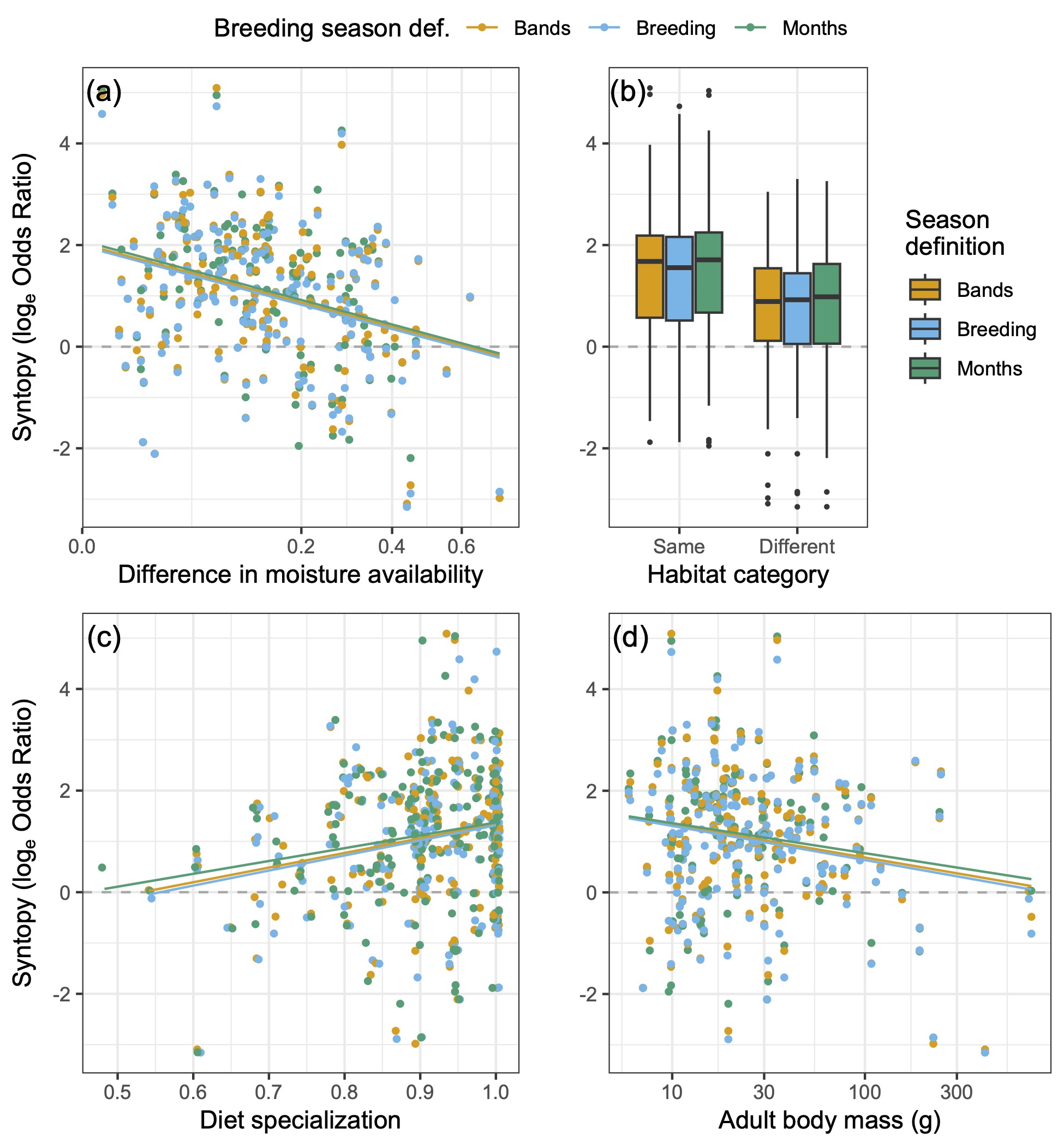Research Topics
Avian life histories: ecology, evolution and diversity
Bird species differ strongly in many life-history traits, including clutch size, incubation period duration, nestling growth rates or adult mortality. Explaining these differences in terms of adaptation to prevailing environmental factors is a major challenge of comparative biology. Based on data collated from literature, we study songbirds worldwide to reveal selective forces and constraints shaping avian life histories. We are also interested in phylogenetic and spatial components of life-history variation. Specific past and current project include:
- Evolution of growth rates (body mass, wing, tail, and tarsus length) in passerines
- Regional and global geographic variation in nest predation rates
- Clutch size evolution in Australian songbirds
- Evolution of beak size and shape in honeyeaters (Meliphagidae) and allies
- Global variation in post-fledging survival to independence in passerines
The evolution of parental care and cooperation
Animal species differ widely in patterns of parental care, ranging from simple guarding of young to elaborate biparental care with long-term offspring provisioning. In birds, biparental care is most prevalent, but species strongly differ in overall investment and in how males and females share their parental duties. Based on large-scale data from literature, we study ecological and social factors shaping parental care in birds. Specific past and current projects include:
- Incubation behavior in relation to nest predation and temperature in songbirds globally
- Factors explaining the sharing of parenting duties between sexes in birds
- Male and female incubation behavior in songbirds globally
- Male incubation effort in relation to extra-pair paternity
The evolution of feather coloration
Bird feathers come in an astonishing variety of shapes and colours. Birds use them for camouflage as well as signalling to conspecifics. Both males and females might signal their quality to prospecting mates by a number of feather ornaments with different physiological and optical properties. These include colours based on pigments (the most frequent are carotenoids and melanins) and structural mechanisms. We study macroevolution and spatial variation of feather color in multiple feather patches in several songbird families. Specific past and current projects include:
- Ecogeographic variation in feather coloration of Australian songbirds
- Sexual dichromatism in relation to exposure to predators in passerines globally
- Macroevolution of feather color in several songbid clades (Old Wolrd orioles, New World wood-warblers, Australasian Fairy-wrens, Honeyeaters)
Ecology and biogeography of avian communities
We study species richness, functional diversity, community assembly, and niche partitioning in forest and woodland communities of songbirds (Passeriformes). We combine broad-scale macroevolutionary and macroecological analyses based on data from literature and museum collections with extensive fieldwork. We aim at revealing factors that are critical in shaping local and regional diversity and species coexistence in avian communities. Specific past and current projects include:
- Regional and local diversity of songbird communities in Australian woodlands and forests
- Foraging behavior, specialization, and the structure of foraging guilds in Australian songbirds
- Species richness and functional and phylogenetic diversity of forest bird communities
Radiations and the evolution of diversity
There are many interesting clades of passerines with diverse life histories, ecological niches, feather colurs, and songs. We are interested in how this diversity originated and use phylogeny-informed analyses to study this problem, so far in Parulidae and Meliphagides. We try to disentangle the effects of species co-occurrence and competitive interactions on trait divergence in these radiations. We also use citizen-science data to study post-speciation processes, specifically the evolution of species co-occurrence after speciation. Specific past and current projects include:
- The evolution of species co-occurrence upon speciation in songbirds
- Patterns of trait evolution in passerine evolutionary radiations: Wood warblers (Parulidae) and Honeyeaters, Thornbills, Fairy-wrens and allies (Meliphagides)
